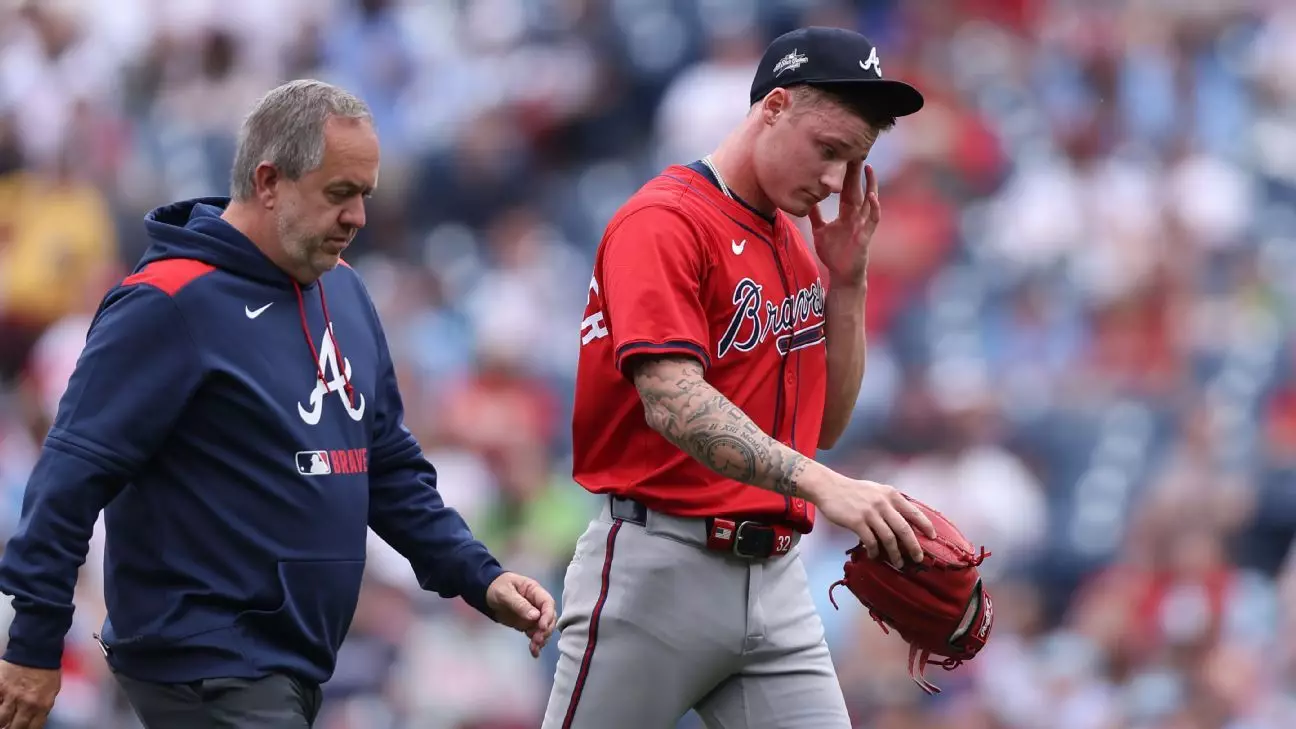The Atlanta Braves have entered a turbulent chapter in their season following crucial pitching setbacks, most notably the recent Tommy John surgery endured by rookie AJ Smith-Shawver. This procedure, which involved the reconstruction of the ulnar collateral ligament in his right elbow, is notorious for sidelining athletes for extended periods. Smith-Shawver’s prognosis suggests he will miss not only the remainder of the current season but potentially the initial stages of the next as well. Such injuries not only impact a team’s immediate performance but also reshape its long-term outlook, creating an environment of concern for both players and management.
Manager Brian Snitker’s optimistic report post-surgery—that “everything went well”—provides some solace. Still, the reality remains that Smith-Shawver’s promise is now tempered by the strenuous rehabilitation process ahead. At merely 22 years old, with an impressive start to his MLB career—recording a 3.86 ERA and striking out 42 batters in 44 1/3 innings—his absence will be profoundly felt. Once touted as a burgeoning star in the Braves’ rotation, his setback raises questions about the team’s depth in pitching talent and how they will navigate the remaining games without his contributions.
The Kimbrel Conundrum
Meanwhile, the departure of Craig Kimbrel from the Braves roster represents another critical juncture. Having recently been designated for assignment after a brief return to the team where he initially made his mark, Kimbrel’s free agency decision seems bittersweet. As the franchise’s all-time saves leader during his initial five years with the Braves, Kimbrel had hoped to reclaim his former glory—a journey that has clearly faltered following a disappointing tenure with the Baltimore Orioles.
Kimbrel’s struggle to mesh with current lineup dynamics illustrates the daunting challenge of rejuvenating a career once characterized by stellar performances. His single outing in what should have been a triumphant return—albeit scoreless—was insufficient to prove his readiness to the Atlanta brass. This episode reflects a broader concern about athlete transitions; many struggle to recapture their previous form after facing setbacks, particularly when dealing with age-related declines and ongoing competition from younger, more dynamic players.
Team’s Current Dynamics and Future Outlook
As the Braves grapple with these unexpected shifts in their pitching staff, the looming question is how they can pivot effectively. The seven-game losing streak punctuates a growing sense of urgency for the team, illuminating vulnerabilities in their roster at a critical point in the season. The organization must now look inward, analyzing player performance and scouting potential reinforcements.
While Snitker remains hopeful for Smith-Shawver’s recovery, he has also underscored the need for adaptive strategies that prioritize both immediate performance and long-term team health. The Braves face a crossroads; they can either succumb to these setbacks or find ways to evolve amid challenges. As the pitching landscape shifts, the ability to nurture young talent and understand what contributes to a successful return from injury will define the crew’s resilience and success as they navigate the remainder of the season.

